
Britain’s Top 10 Most Common Garden Birds of 2020
Share
Britain’s top 10 most common garden birds – 2020
The results for this year’s Big Garden Birdwatch are in and yet again the House Sparrow has topped the charts at the number one spot.
Although it is the garden bird which is most commonly seen, its numbers are down 53% since records began in 1979. Indicating that House Sparrows still need our help. We've written before how important garden bird feeding is for this species - not only small household scraps but also many of Haith's seed mixtures, favourites being: Original Wild Bird Food, Premium Wild Bird Food (No Wheat) and a sprinkling of one of our soft foods, like Pinhead Oatmeal, are all suitable as ground or bird table food and they will also take peanuts from hanging feeders.
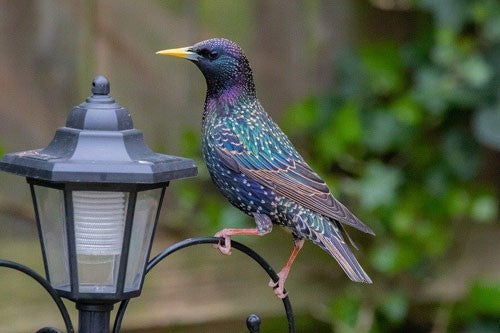
In second place is the Starling. Not everyone’s cup of tea and sometimes seen as a bully in the garden. They can seem quite fearless when strutting around the garden looking for scraps. They will take a wide variety of Haith's food mixtures especially, Golden Chorus and Super Value Fat Balls.
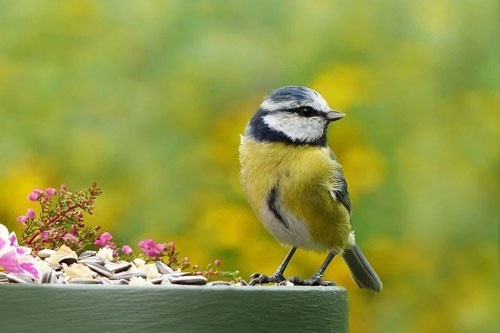
Next comes the Blue Tit, a non-mover at number three. This small acrobatic species is easily identified, as it is the only British bird with a blue crown. It has a high mortality rate especially during harsher winters and benefits from the food we provide and the nest boxes we put up in our gardens. Try feeding peanuts and fat balls as well as Sunflower Hearts and wriggly live mealworms.

In fourth place this year is the woodpigeon. Considered a pest by many farmers due to the damage it causes to crops, it will eat almost anything from seed to food scraps. Garden Pheasant Mix and Original Wild Bird Food are the mixes to try should you wish to attract it into your garden.
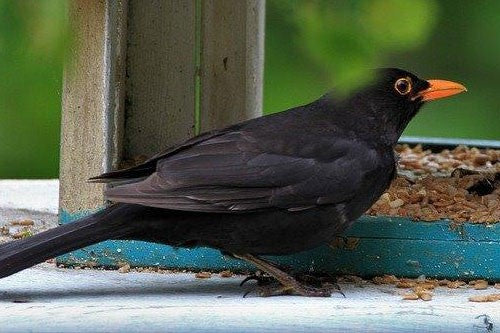
The gorgeous Blackbird is at number five in the top ten list and although its numbers are down 46% since 1979 it is still a firm garden bird favourite. Blackbirds feed mainly on insects and earthworms during the summer months and fruit and berries during the winter, but Haith’s Huskfree Advance with Dried Mealworms, live foods like waxworms and mealworms and Softbill Food would soon attract this beautiful member of the thrush family into your garden.
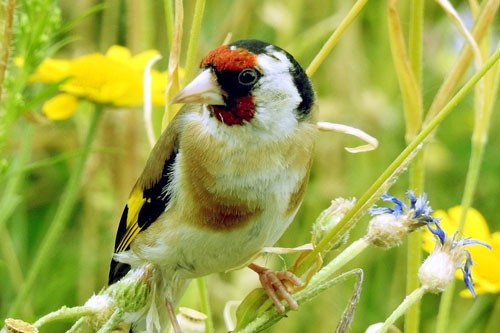
The Goldfinch with its Latin name of Carduelis Carduelis is common throughout the UK apart from the highland areas. Most famous for its colourful red and yellow plumage, goldfinches are most common in parks, gardens and woodland areas with a tendency to flock in large numbers to feed, which is known as a charm of Goldfinches. The Goldfinch is number six in the most common garden bird survey. They mainly feed on Goldfinch & Siskin mix, Niger Seed and they do love Sunflower Hearts too.
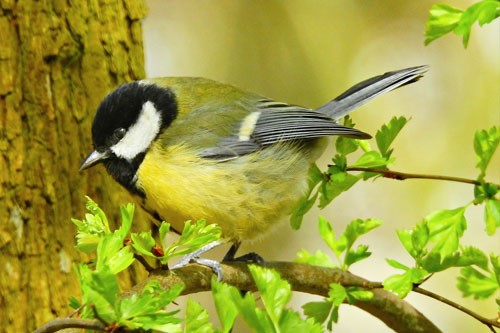
The Great Tit (Parus Major) is the largest member of the tit family in the UK. The adults are prominent birds with wings and tail that are a blue grey, the breast is bright yellow, and the under tail is white, the head is black with large white cheek patches. The Great Tit can be found in all counties throughout the UK and Ireland, they are usually seen in parks, woodland, gardens and hedgerows. The Great Tit is number seven in the most common garden bird survey and is partial to black sunflowers, peanuts, mealworms and fat balls and loves Prosecto- Insectivorous.
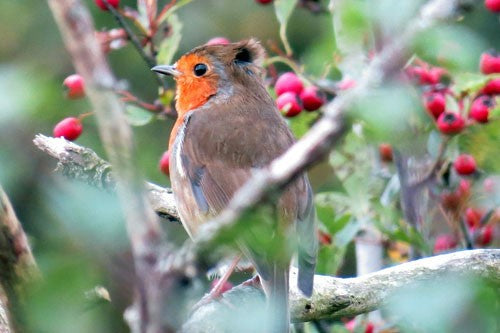
The Robin is at number eight in this year’s garden bird survey. The Robin is seemingly keen to rise early and can be one of the first to start singing early morning, however despite how friendly the Robin can become it would not think twice about driving away intruders as it can punch above its weight, even with larger birds. Its Latin name is Erithacus Rebecula and is a plump little bird with a bright red breast, face and throat. The purpose of the red breast is for territorial defence and not courtship, the precedence of the colour is often to deter intruders. They mainly feed on Prosecto Insectivorous, Live and Dried Mealworms and Fat Robin Mix - but they'll happily take Sunflower Hearts and small seeds.

The Long-tailed Tit (Aegithalos Caudatus) is a most sociable bird, with its tiny little body and very long tail, its plumage is mainly black and white with tinges of pink and grey with a long black tail. Long-tailed Tits are widespread and are mostly seen in common parks, gardens and large areas of heathland and woodlands, where there is mostly ash, oak and sycamore trees. The Long-tailed Tit is a new-comer on the leader board, coming in at number nine in the most common garden bird survey. They mainly feed on Peanuts Granules, insects and other invertebrates and Golden Chorus.
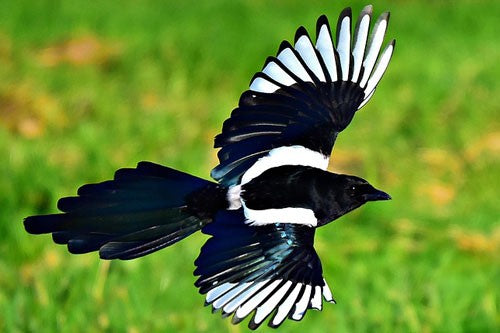
The Magpie, last but by no means least, is this year’s number ten. A very popular bird and has increased in numbers over the years. Its Latin name is Pica Pica. The Magpie is black and white with a very long tail which makes up half the bird’s length. Magpies have always been surrounded by superstition as the poem states.... one for sorrow etc. In spring you will usually find large numbers of magpies gathering to settle territorial rights and these gatherings are called parliaments. Very popular in England and Wales, they usually go around in pairs or more, but not too welcome in gardens because of their predatory habits. They will come to a bird table for scraps, cereals, fruit, berries and nuts which they will take away.
Written by Angela and Chris
